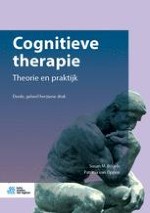2019 | OriginalPaper | Hoofdstuk
13. Cognitieve therapie bij middelgerelateerde en verslavingsstoornissen
Auteurs : dr. Maarten Merkx, prof. dr. Reinout Wiers
Gepubliceerd in: Cognitieve therapie
Uitgeverij: Bohn Stafleu van Loghum
2019 | OriginalPaper | Hoofdstuk
Auteurs : dr. Maarten Merkx, prof. dr. Reinout Wiers
Gepubliceerd in: Cognitieve therapie
Uitgeverij: Bohn Stafleu van Loghum
Print ISBN: 978-90-368-2020-2
Elektronisch ISBN: 978-90-368-2021-9
Copyright: 2019
